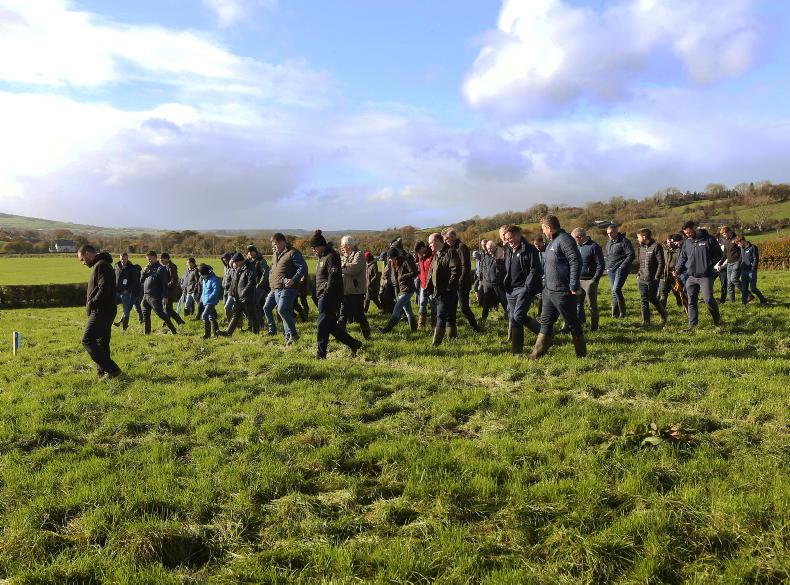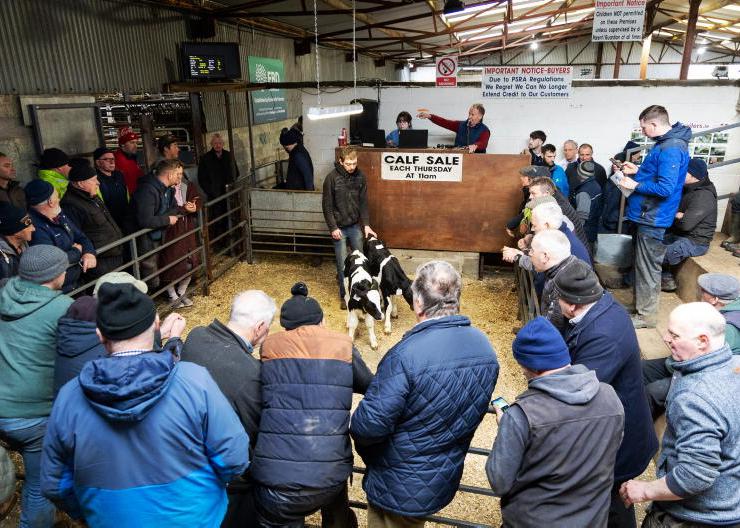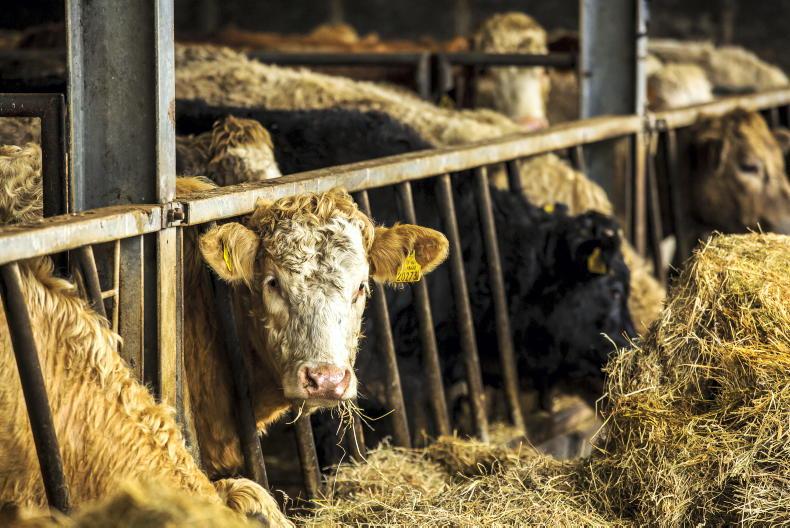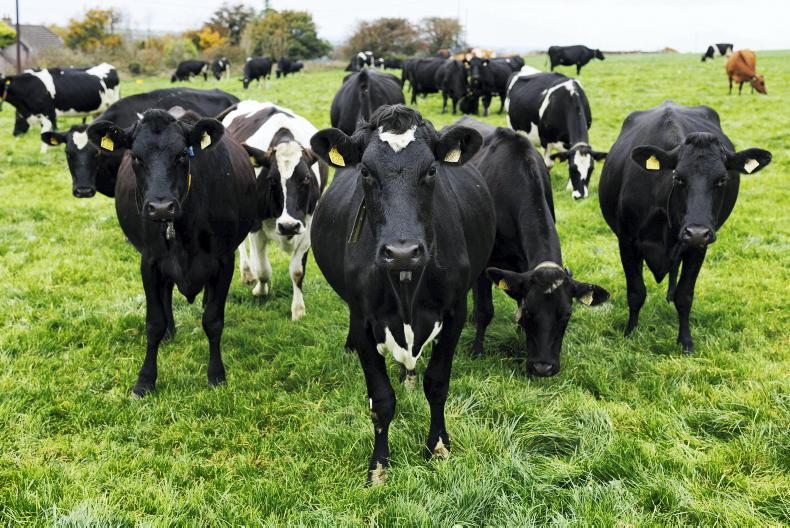If the dairy industry for the past few years could be summed up with one word. it would have to be volatility. Farmers saw a huge increase in input costs in 2022 accompanied by record high milk prices. 2023 saw those milk prices crash while input costs remained stubbornly high.
Even though the last six months have seen a steady rebound in milk prices, that has been accompanied by a further drop in milk production across the summer months.
This has been because the two main factors driving the drop in milk production have little to do with price. Firstly, the weather has had a serious effect on output – both at the back end of 2023 and at the start of this year. Wet conditions meant that milk production was down due to early housing of cows and concerns over fodder availability. Conversely, the dry autumn has seen milk production in recent weeks significantly ahead of last year.
The other factor which is holding back farmers from expanding output is uncertainty over the future of the nitrates derogation. Were Ireland to lose the derogation, or see it cut, output would almost inevitably fall. However, the lack of clarity over that decision is already forcing lower milk production here.
Investments in increasing dairy output take years to mature, and no farmer will be willing to take such a bet on the future when a political decision could see the rug pulled from under them in a year’s time.
Unwillingness to invest
The annual Teagasc farm survey clearly shows this unwillingness to invest. Every year since 2015 the survey has shown that around two-thirds of dairy farmers are carrying debt. It would be expected that the level of debt would rise as farmers expand their operations, so seeing the average level of borrowings flatline over the last three years implies that significant on-farm investments are not happening. See Figure 1.
Obviously, nothing can be done about the vagaries of the weather, but the continued uncertainty over derogation is a policy choice.
Beyond Ireland, the milk supply picture is significantly different, with production generally holding up quite well, while some emerging areas such as China are disrupting previous trade patterns.
According to the most recent short-term outlook from the European Commission, the EU will see a milk supply increase of 0.5% in 2024 and 0.2% next year.
While production is lower in Ireland and the Netherlands this year, key producers Germany and Denmark have held their ground while Poland continues its expansion of recent years. France, Spain and Italy are also in line for increased output this year.
Cheese and whey
On product mix, the bigger winners for Europe are expected to be cheese and whey, while exports of skimmed and whole milk powder are set to fall precipitously due to changes in Chinese demand.
For Irish farmers, there is good news as European butter production is also set to fall, which may provide further opportunities for Irish product.
However, there may be a sting in the tail here as the price of butter would have to stay high in to make it profitable for Irish processors to produce as the value of skim milk powder looks set to remain on the floor for some time.
Chinese milk production
That drop in the price of skim and whole milk powder seems to be more structural than seasonal as Chinese output has taken a step-change higher in recent years.
The US department of agriculture estimates that Chinese milk production has remained high in 2024, despite falling prices in the local market.
Much of the milk produced in China is used for whole and skim milk powders, and the effects of that can clearly be seen in Chinese import data, with September 2024 imports of both powders half of what they were a year earlier.
While Ireland’s exports of these powders to China have been basically zero in the last 12 months (falling from 15,000t in 2021 to 500t in the year to August 2024, according to Bord Bia data), the changing dynamics will keep pressure on the global price for some time to come.
There is better news on the cheese side, with EU production expected to rise along with demand. Global demand for whey is also expected to remain strong as exports are forecast to grow by 2% in 2025.
Processors
This year has been one of mixed fortunes for the processing sector. When quotas were abolished, there was a huge amount of money invested in ensuring that processors could meet the increased supply.
The sector has managed to do this, with success ultimately a factor of timing and product mix.
For investments to pay off, processors need milk. The uncertainty over the future of the derogation means that most industry leaders see the period of growth for the industry is over for now.
For those who invested early, or picked the right product line, the ramp up in milk production has seen huge increases in turnover and higher prices paid back to farmers.
For others, the investments have either been in the wrong product lines, meaning hopes for profits have not materialised, or have been too ambitious, built in the expectation of a continued rise in milk production. As one industry insider said, some of the spending was akin to building a rotary parlour for a herd of 15 cows.
The main challenge facing processors is the same one that faces farmers.
For investments to pay off, processors need milk. The uncertainty over the future of the derogation means that most industry leaders see the period of growth for the industry is over for now, with many looking to get as much milk as they can in the door in order to maximise efficiency in the plant they already have in place.
Here again, certainty over the future of supply would make everybody’s job easier.
Every act of consolidation does require a certain amount of investment – and usually some fresh borrowing. Management of processors will be slower to act if they fear a future drop in milk deliveries will mean that a deal which might make sense now could look very negative in the wake of a 10%-15% drop in milk supply.
Competition between processors
On product mix, Irish processors as a whole cover almost every possible angle on what can be done with a litre of milk, from casein to whey to cheese to butter to powders and everything in between. Unfortunately, there is also some competition between processors on certain product lines.
While a lot of the international consumer sector is faced with the Kerrygold brand, there are increasing numbers of other Irish produced grass-fed butters arriving on the market.
This competition may be a natural reaction to trying to increase returns for the individual co-operative, but it does risk a long-term dilution of the high-value Kerrygold brand.
Overall, for both producers and processors, the derogation is the key concern governing decisions on investment and output. Ideally, the industry needs the current 220kg/ha limit to be maintained, and maintained for a longer time-frame.
Setting that level for 10 years at least will give everyone the best chance of making the returns they need from their product while also giving them room to invest in continuing to produce the highest-quality dairy products in the world.
If that is in place, then all the other challenges such as weather and changing global markets can be faced without having, effectively, one hand tied behind our backs.









SHARING OPTIONS